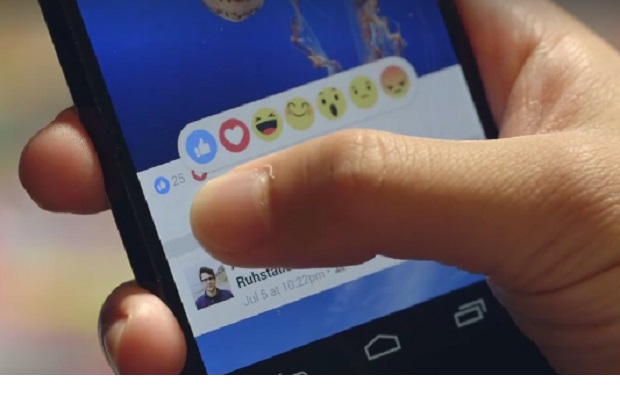Facebook rolled out its ‘Reactions’ button last week, giving users six new ways to express their emotions at the click of a button- but advertisers are not able to differentiate between and ‘loved-up’ or ‘angry’ consumer on the social network for now.
At launch, Facebook is not differentiating between the responses to determine a user’s interests when it places ads and other posts in a customer’s news feed.
All reactions will be counted as additional likes, meaning Facebook will assume that the user wants to see more similar content, even if the person responded with an “anger” emoticon.
Facebook said it would decide later how new reactions should be weighted to personalise news feeds.
Here’s a list of what Reactions will mean for advertisers:
· Metrics that include Likes in ads reports will also include Reactions.
· However, these won’t be broken out as individual Reactions.
· Advertisers who want to see a breakdown of Reactions can do so in their Page insights only.
· Reactions are treated the same as Likes for ads delivery (ex: Loves carry no extra weight than Likes in the auction).
· In the same way that you can’t remove a Like, you can’t remove a Reaction.
Facebook explained the new feature, called Reactions, in a blog post:
“We’ve been listening to people and know that there should be more ways to easily and quickly express how something you see in News Feed makes you feel. That’s why today we are launching Reactions, an extension of the Like button, to give you more ways to share your reaction to a post in a quick and easy way.”
Giving users six reaction options means that Facebook can start to gather much more nuanced data on how users are reacting to any given post. It can begin to differentiate between posts that users are enjoying, posts they find fascinating, posts that make them happy, and posts that make them sad.
Facebook says that it isn’t using the data from new reactions in that way yet. But that will soon change, according to a blog post from Facebook’s Sammi Krug:
“Initially, just as we do when someone likes a post, if someone uses a Reaction, we will infer they want to see more of that type of post. In the beginning, it won’t matter if someone likes, “wows” or “sads” a post — we will initially use any Reaction similar to a Like to infer that you want to see more of that type of content. Over time we hope to learn how the different Reactions should be weighted differently by News Feed to do a better job of showing everyone the stories they most want to see.”
